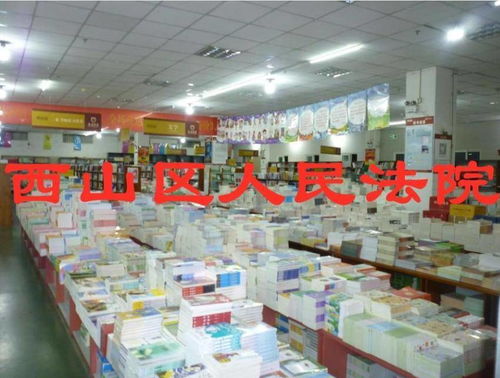Textile Dyeing Fundamentals for Translation
The fundamentals of textile dyeing involve the process of applying color to fabrics, often using chemicals that can penetrate into the fibers and create a uniform appearance. This process is essential for creating patterns, designs, and colors that are both visually appealing and functional. The key steps in textile dyeing include selecting the appropriate dye, preparing the fabric, mixing the dye with the appropriate amount of water or other solvent, and then applying the mixture to the fabric. Once the dye has been absorbed by the fabric, it must be washed and dried to remove any excess dye and ensure that the color remains consistent. The quality of the dyeing process can impact the durability and longevity of the final product, making it important to select the right dye and method for each specific application.
Introduction In the world of textiles, dyeing is a critical process that not only enhances the aesthetic appeal of fabrics but also imparts durability and functionality. The ability to translate this knowledge effectively into another language is crucial for textile professionals who work in international markets or those seeking to learn more about the industry. This tutorial aims to provide a comprehensive overview of textile dyeing principles, including the various techniques used in the process, their applications, and the challenges faced in translating these concepts into English. By the end of this guide, you will have a solid foundation to start your journey as a textile dyeing expert.
Textile Dyeing Principles Textile dyeing involves the application of colorants onto fabrics through a variety of methods. The most common techniques include:
-
Solvent Dyeing: This method uses solvents such as acetone, alcohol, or xylene to dissolve the dye and facilitate its penetration into the fibers. The solvent is then removed, leaving behind the dyed fabric.

-
Emulsion Dyeing: In this technique, dyes are dissolved in an emulsion (a mixture of water and oil) before being applied to the fabric. The emulsion breaks down into droplets during washing, releasing the dye onto the fabric.
-
Pad-Dry Dyeing: This method involves applying dye directly to the fabric using a pad, followed by drying in a hot air dryer. The dye is then fixed onto the fabric by treating it with a chemical fixative.
-
Batch Dyeing: This method involves mixing dyes with other chemicals and applying the mixture to the fabric. The dye is then washed off after drying.
Applications of Dyeing Techniques The choice of dyeing technique depends on the desired outcome, such as color intensity, fastness to light and washing, and cost-effectiveness. Here are some examples:
-
Solvent Dyeing: This technique is commonly used for high-end garments and upholstery fabrics that require vibrant colors and excellent washability. Solvent dyeing produces bright, vivid colors that stand up well to wear and tear.
-
Emulsion Dyeing: This technique is ideal for producing subtle shades and pastel colors on woven fabrics. It offers better control over color intensity and allows for a wider range of colors compared to solvent dyeing.
-
Pad-Dry Dyeing: This method is suitable for printing patterns on fabrics, especially when the pattern requires intricate details and high color accuracy. Pad-Dry dyeing produces consistent results and is easy to adjust for different color requirements.
-
Batch Dyeing: This method is often used for large-scale production where uniformity is essential. Batch dyeing offers significant cost savings compared to solvent dyeing and can be used for a wide range of materials, including cotton, linen, and synthetic fibers.
Challenges in Translating Textile Dyeing Knowledge Translating textile dyeing principles into English requires careful consideration of cultural nuances and technical jargon. Some common challenges include:
-
Cultural Differences: Textile dyeing practices vary across cultures, and understanding these differences is essential for accurate translation. For example, some cultures may use specific dyes or techniques that are not commonly used in Western countries.
-
Technical Jargon: Textile dyeing is a complex field, and many terms and concepts are unique to the industry. Translators must be familiar with these terms to convey the intended meaning accurately.
-
Quantitative Expressions: Textile dyeing parameters, such as concentration and temperature, are often expressed in quantitative terms. Translators need to ensure that these values are translated correctly to avoid misunderstandings in the final product.
Case Study: Understanding the Impact of Textile Dyeing Techniques on Global Trade One example of how textile dyeing principles can impact global trade is the case of a multinational textile company that operates in Asia and Europe. The company's primary product line consists of high-end apparel and upholstery fabrics that require solvent dyeing to achieve vibrant colors and excellent washability. However, due to cultural differences and varying dyeing techniques, the company faces challenges in translating its textile dyeing knowledge into English for export markets.
To address this issue, the company hired a professional translator who specializes in textile technology. The translator conducted extensive research on textile dyeing principles and developed a detailed translation guide that outlines the key concepts and terminology related to textile dyeing. The guide was then reviewed by experts in the industry to ensure accuracy and relevance.
After completing the translation, the company tested the guide with samples from different regions, including Asia, Europe, and North America. The feedback from these tests helped refine the guide further and improve its effectiveness in communicating textile dyeing knowledge to international partners.
Conclusion Understanding textile dyeing principles is crucial for anyone working in the textile industry or seeking to learn more about the industry. By following this tutorial, you will gain a comprehensive understanding of the various techniques used in textile dyeing and their applications. Additionally, this guide provides practical tips on how to translate textile dyeing knowledge into English while addressing common challenges encountered in cross-cultural communication. Remember, effective translation requires careful attention to detail and a deep understanding of both the source and target languages. With dedication and practice, you can become an expert in textile dyeing and contribute to the growth and success of the global textile industry.
,并结合实际案例进行深入浅出的翻译与实践说明,通过使用英文表格和案例分析,帮助读者更好地理解和掌握纺织品染整的基础知识。
纺织品染整基础知识
纺织品染整的定义与重要性
纺织品染整是指通过化学、物理或生物方法对纺织品进行加工处理,使其具有特定的颜色、图案或性能,它是纺织工业的重要组成部分,对于提高纺织品的质量、降低成本、提高附加值具有重要意义。
染整工艺流程

染整工艺流程包括原料准备、预处理、染色、印花、后整理等环节,染色是关键环节,涉及到染料的选择、使用方法、染色工艺等。
教材翻译与实践案例
教材翻译
本教材主要介绍了纺织品染整的基本原理、技术、设备以及操作方法,通过生动的案例分析,帮助读者更好地理解染整工艺流程中的各个环节,教材还提供了丰富的图表和实例,帮助读者更好地掌握染整工艺的实际操作。
(2)表格补充说明 | 英文表格说明 | | --- | --- | | 染整基本原理 | 表格展示染整的基本概念和原理 | | 染料种类与选择 | 表格列出常见的染料种类及其特点 | | 染色工艺流程 | 表格详细描述染色工艺的各个环节 | | 设备介绍 | 表格列出常见的染整设备及其功能 | | 操作方法 | 提供操作步骤和注意事项 |
实践案例分析
(案例一)纺织品染色实践案例
某纺织公司采用本教材进行纺织品染色实践,该公司选择了一种新型环保染料进行染色,通过调整染色工艺参数,成功提高了染色效果和质量,该公司还采用了先进的染整设备,提高了染色效率和质量,通过本案例的分析,读者可以更好地了解纺织品染整的实际操作和工艺流程。
(案例二)纺织品后整理实践案例
某纺织公司在生产过程中,对纺织品进行了后整理处理,提高了其耐洗性能和柔软度,该公司的后整理工艺采用了特殊的柔软剂和护色剂,通过添加适量的化学物质,使纺织品具有更好的耐洗性能和柔软度,通过本案例的分析,读者可以更好地了解纺织品后整理的实际应用和效果。
实践应用与建议
实践应用建议
(1)学习者应结合实际案例进行深入学习,掌握染整工艺的实际操作和工艺流程,学习者还应注重实践操作,不断总结经验,提高染整工艺水平。
(2)学习者应关注染料的选择和使用方法,掌握染料的特点和性能,选择合适的染料进行染色,学习者还应注重设备的维护和保养,提高设备的使用效率和质量。
(3)学习者应注重染整工艺的环保性和可持续性,采用环保染料和设备进行染色处理,减少对环境的影响,学习者还应注重产品质量和附加值的提高,提高纺织品的竞争力。
学习建议
(1)学习者应认真阅读教材内容,掌握染整基本原理和工艺流程,学习者还应结合实际案例进行深入学习,掌握实际操作技能和经验。
(2)学习者可以通过参加相关培训和学习班等方式,提高自己的染整工艺水平和实际操作能力,学习者还可以通过阅读相关文献和资料等方式,了解染整行业的最新发展和技术趋势。
总结与展望
本篇文章介绍了纺织品染整基础教材的内容,并结合实际案例进行了深入浅出的翻译与实践说明,通过本篇文章的学习和实践应用,读者可以更好地了解纺织品染整的基础知识和实际操作技能,读者还可以结合行业发展趋势和发展前景等因素,不断提高自己的染整工艺水平和竞争力。
Articles related to the knowledge points of this article:
The Spring of Textiles:A Refreshing Emergence of the Industry
Global Trends and Best Practices in Home Textiles Online Shopping



